Peru is a country of incredible natural diversity, with the Andes Mountains, the Amazon Rainforest, and the Pacific Coast all contributing to its unique flora and fauna. As a result, Peru is a top destination for bird-watching enthusiasts, offering a wealth of opportunities to observe both endemic and migratory bird species in their natural habitats. Peru's geography and climate play a significant role in shaping its biodiversity, with the country situated on the western edge of South America and containing a range of different ecosystems, from coastal deserts to high-altitude Andean plateaus. This diversity allows for a wide range of bird species to thrive in Peru, including many that are endemic to the country.

Seamless typical Peruvian ethnic ornament for fabrics
National parks in Peru famous for bird-watching
One of the best ways to experience Peru's rich birdlife is by visiting its many national parks and nature reserves. Here are some examples:
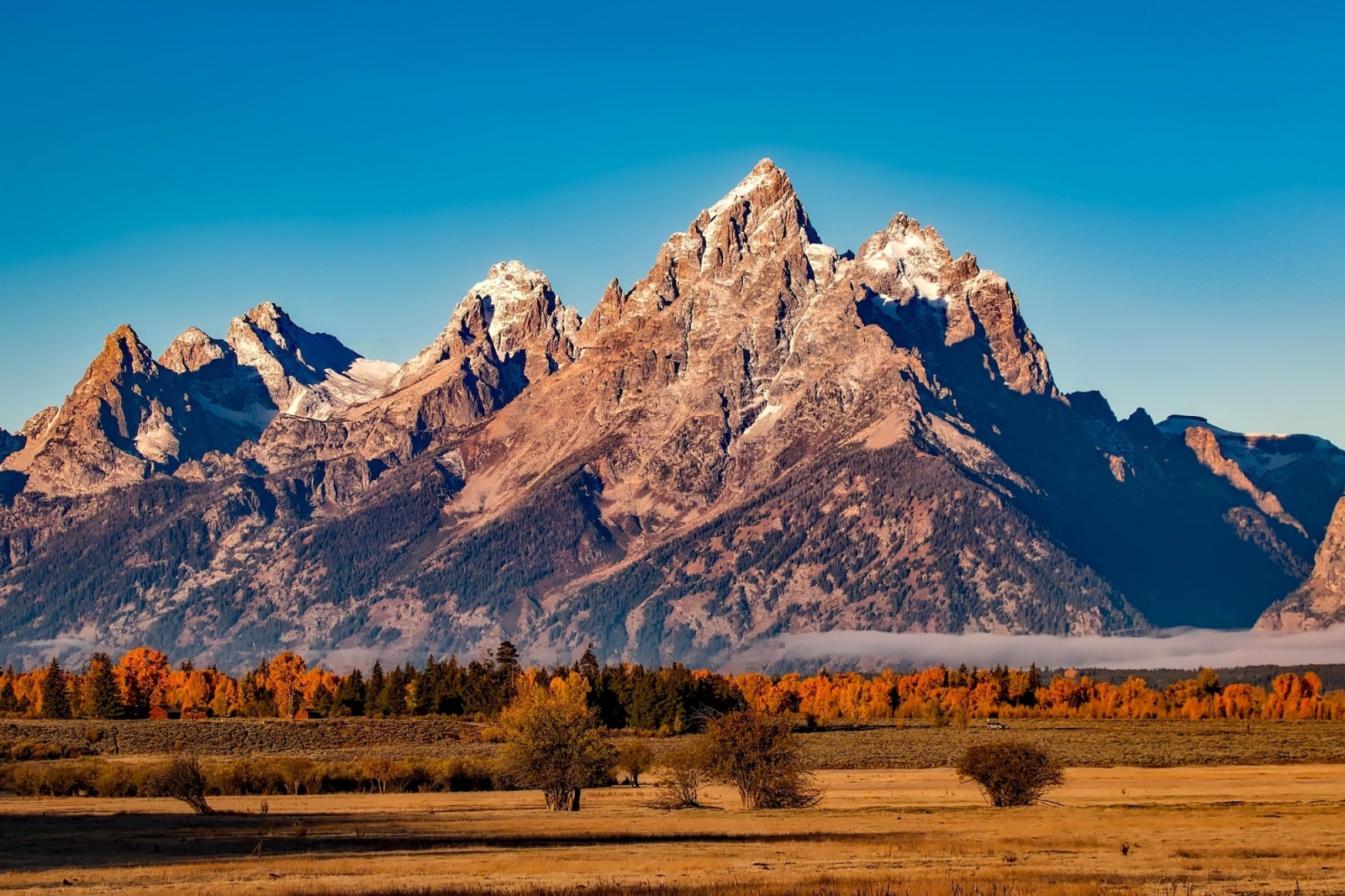
- Manu National Park - Located in the southeastern region of the country, Manu is one of the most biodiverse areas in the world, with over 1,000 bird species recorded. Endemic species found here include the Manu Antbird, Rufous-vented Tapaculo, and the Andean Cock-of-the-Rock.
- Tambopata National Reserve - This reserve is located in the southern Amazon Basin and is home to over 600 species of birds. Endemic species found here include the Rufous-fronted Antthrush, the Peruvian Recurvebill, and the Purus Jacamar.
- Huascarán National Park - Situated in the central Andes, this park is home to several high-altitude bird species, including the Andean Condor, Puna Tinamou, and the Diademed Sandpiper-Plover.
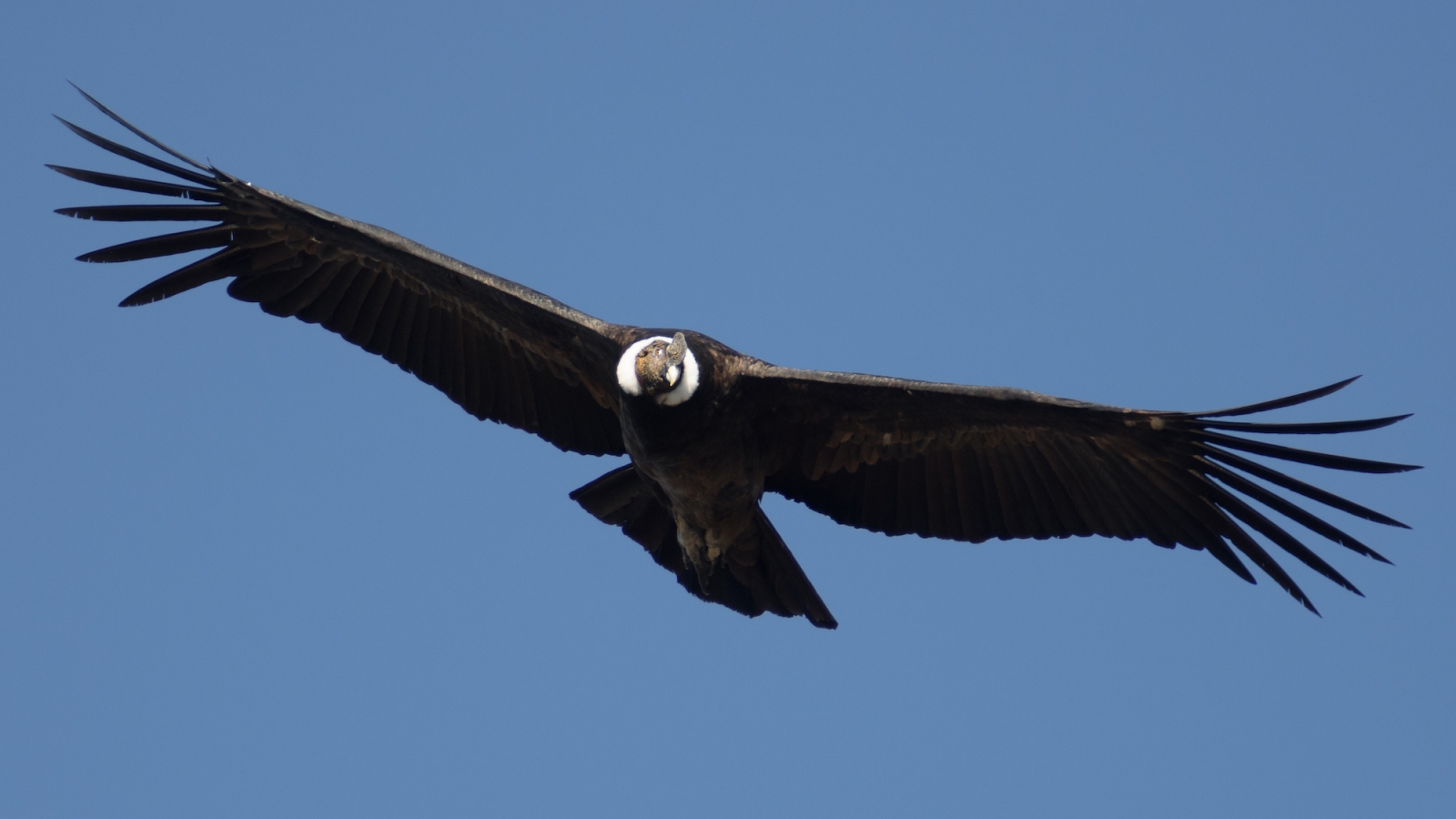
In addition to visiting national parks and nature reserves, visitors can also observe birds in the wild through a variety of methods, including hiking, boat tours, and even birding from a canopy tower. However, it's important to keep in mind that bird watching should be done responsibly, with respect for the natural environment and the birds themselves. For those new to bird watching, it's important to be prepared before embarking on a trip. This includes having the right equipment, such as binoculars and a field guide, and familiarizing oneself with the different bird species that may be encountered. It's also important to be aware of the impact that human presence can have on bird habitats, so it's recommended to go with an experienced guide who can ensure a safe and responsible birding experience.

Panoramic view of the Huascaran Mountain and the Huandoy mountain from the Portachuelos viewpoint. Huaraz, Ancash, Peru.
The best time to go bird watching in Peru depends on the region and the specific species being targeted. Generally, the dry season from May to October is the best time for birding in the Andes, while the rainy season from November to April is ideal for birding in the Amazon.
There are many tour operators who offer bird-watching tours in Peru, ranging from budget options to more luxurious experiences. Prices vary depending on the length and type of tour but generally start at around $1,000 for a week-long tour.
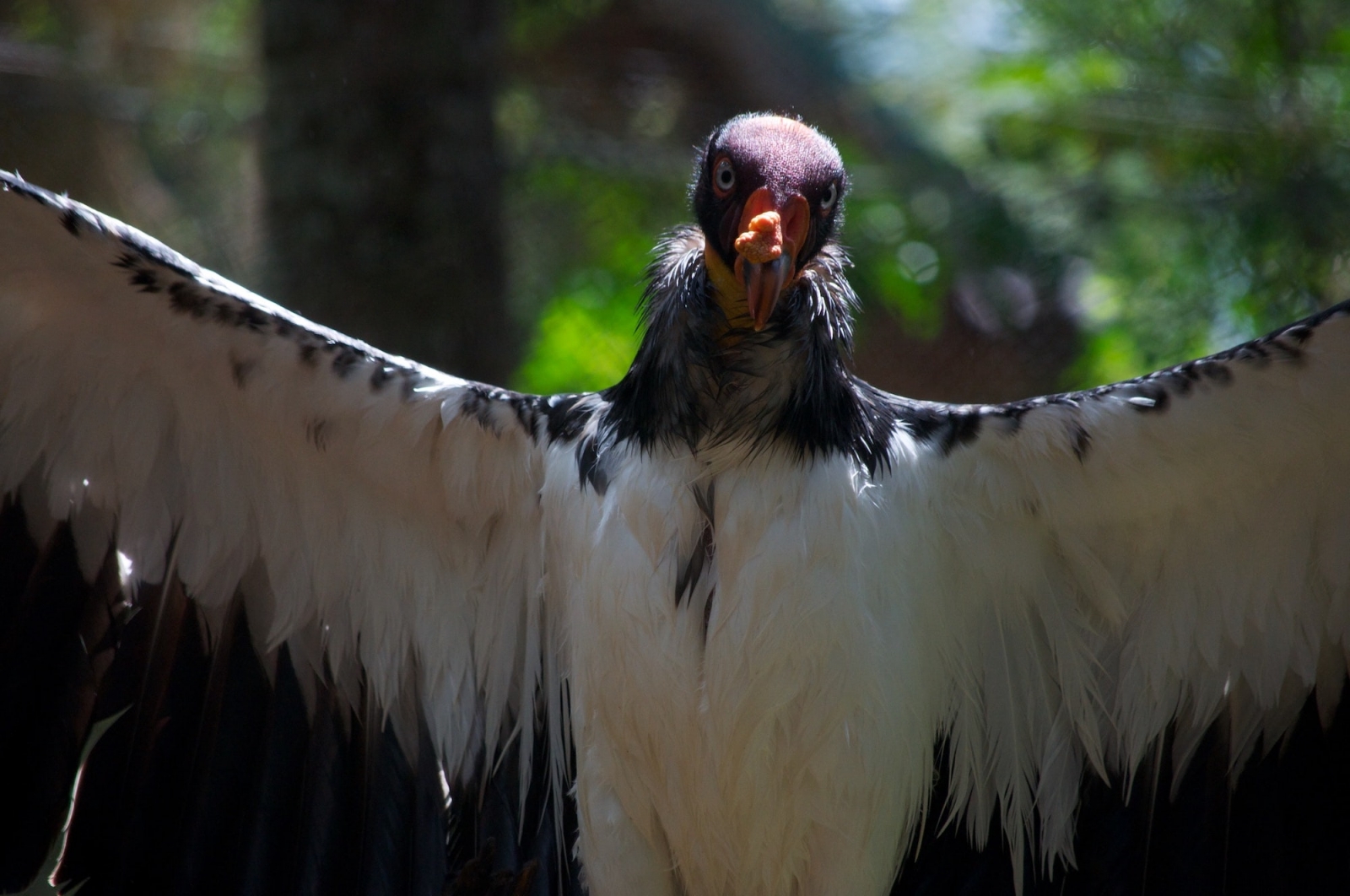
Andian Condor in Peru
Manu National Park
Manu National Park is one of the most biodiverse areas in the world, located in the southeastern region of Peru. The park covers an area of 1.7 million hectares and spans from the Andean highlands to the lowland Amazon rainforest, making it an incredibly diverse ecosystem. Manu National Park is home to over 1,000 bird species, including many that are endemic to the region. The park's varied habitats, from cloud forests to Amazonian floodplains, support a diverse range of bird species. Some of the endemic bird species found in the park include the Manu Antbird, Rufous-vented Tapaculo, Golden-backed Mountain-Tanager, and the Andean Cock-of-the-Rock.
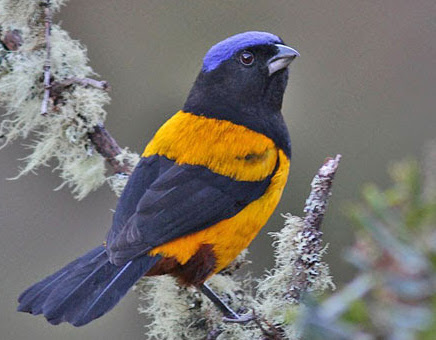
The Golden-backed Mountain-Tanager, also known as the Tangara gyro-la, is a brightly colored bird found in the high-altitude forests of the Andes Mountains in South America, mostly in Peru. It has a vibrant blue head and upper body, with a bright yellow back and rump, and black wings with white wing bars. It feeds on insects, fruit, and seeds, and is often found in mixed flocks with other tanagers and finches. The species is considered to be of the least concern, but its population is threatened by deforestation and habitat loss.
In addition to its incredible birdlife, Manu National Park is also home to a wide range of other wildlife, including jaguars, giant otters, and over 13 species of primates. The park is also home to several indigenous communities, who have lived in the region for thousands of years and continue to maintain their traditional way of life. Visitors to Manu National Park can explore the park's incredible biodiversity through a range of activities, including hiking, boat tours, and wildlife spotting from observation towers. Visitors can also learn about the park's indigenous communities and their way of life, including their traditional use of medicinal plants.
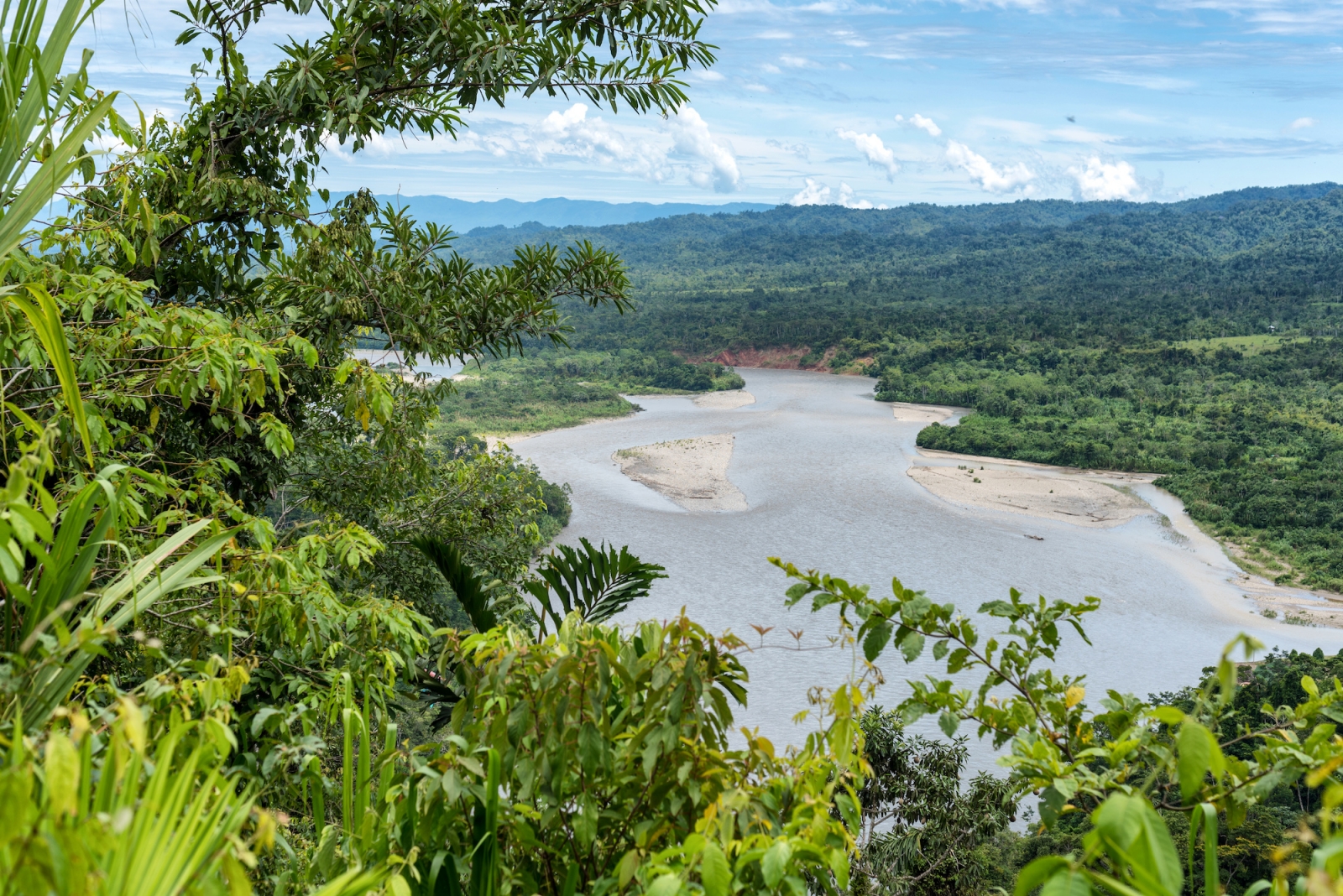
View of the Amazonia lush forest from Manu National Reserve Park in Peru
Given the park's remote location and the sensitive nature of its ecosystem, it's recommended to visit Manu National Park with an experienced guide who can ensure a safe and responsible visit. Many tour operators offer guided tours to the park, ranging from day trips to multi-day expeditions. The park is accessible by road from the city of Cusco or by air from the city of Puerto Maldonado. Overall, Manu National Park is a must-visit destination for anyone interested in bird watching and exploring the incredible natural diversity of Peru.

Turquoise alpine mountain lake Laguna Paron in Caraz Huaraz Ancash Cordillera Blanca in Peru
Tambopata National Reserve
Tambopata National Reserve is another important protected area for birdwatching in Peru, located in the southern part of the Amazon rainforest. The reserve covers an area of over 1.4 million hectares and is known for its high biodiversity and pristine natural habitats. The reserve is home to over 670 bird species, including many that are endemic to the region. Some of the most notable bird species found in Tambopata National Reserve include the Harpy Eagle, Blue-and-yellow Macaw, and the Rufous-crested Coquette.
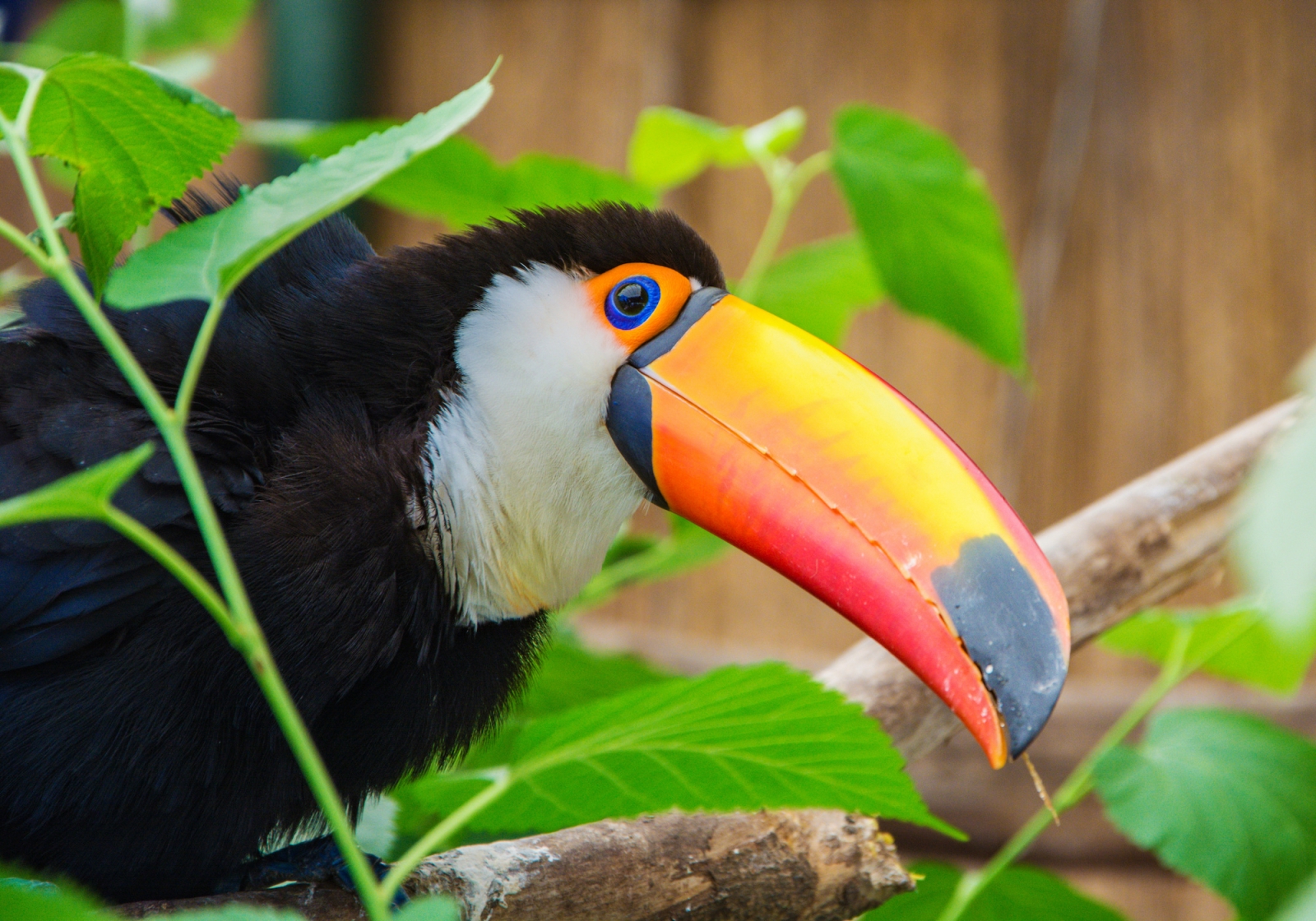
Ramphastos toco is the scientific name for the Toco Toucan, which is found in various countries in South America including Peru. The Toco Toucan is primarily black with a white throat and a large, colorful bill that is orange-yellow with a black base. They are the largest species of toucan and can be found in a variety of habitats, including forests, savannas, and shrublands
Here are some interesting facts about the Toco Toucan:
Their bill is not just for show - while it certainly makes them distinctive and helps attract a mate, it also serves a functional purpose. The bill is actually very lightweight, which helps the bird maintain balance while jumping between branches. Additionally, the bill is used to reach and pluck fruit from branches that are otherwise out of reach.
They have a unique digestive system - Toucans have a long and winding digestive tract that can take up to two hours for food to pass through. This allows them to extract as many nutrients as possible from their food, which is important in their diet of mostly fruits.
They are surprisingly agile - Despite their large size, Toco Toucans are very agile and can move quickly through the trees. They are also known to jump between branches, using their bill for the balance, which allows them to move efficiently through the forest canopy.
They have a strong pair bond - Toco Toucans are monogamous and form strong pair bonds. They are often seen grooming each other and sharing food, which helps to strengthen their bond.
They have a unique way of communicating - Toco Toucans have a variety of vocalizations that they use to communicate with each other. One of the most distinctive is a loud croaking call, which is used to establish territory and attract mates. They also have a series of yelps and barks that are used for communication within their family group.
They have been known to swallow small prey whole - Although their diet is primarily fruit, Toco Toucans have been known to eat insects, small reptiles, and even small birds. They swallow these prey items whole, and their digestive system is capable of breaking down the bones and other indigestible parts.Toco Toucans are fascinating birds with many unique adaptations that allow them to thrive in their environment
In addition to its incredible birdlife, Tambopata National Reserve is also home to a wide range of other wildlife, including giant otters, capybaras, and several species of primates. The reserve is also home to several indigenous communities, who have lived in the region for thousands of years and continue to maintain their traditional way of life. Visitors to Tambopata National Reserve can explore the reserve's diverse habitats through a range of activities, including hiking, boat tours, and wildlife spotting from observation towers. The reserve is also a popular destination for eco-tourism, with many lodges and local tour guides offering guided tours and eco-friendly accommodations.
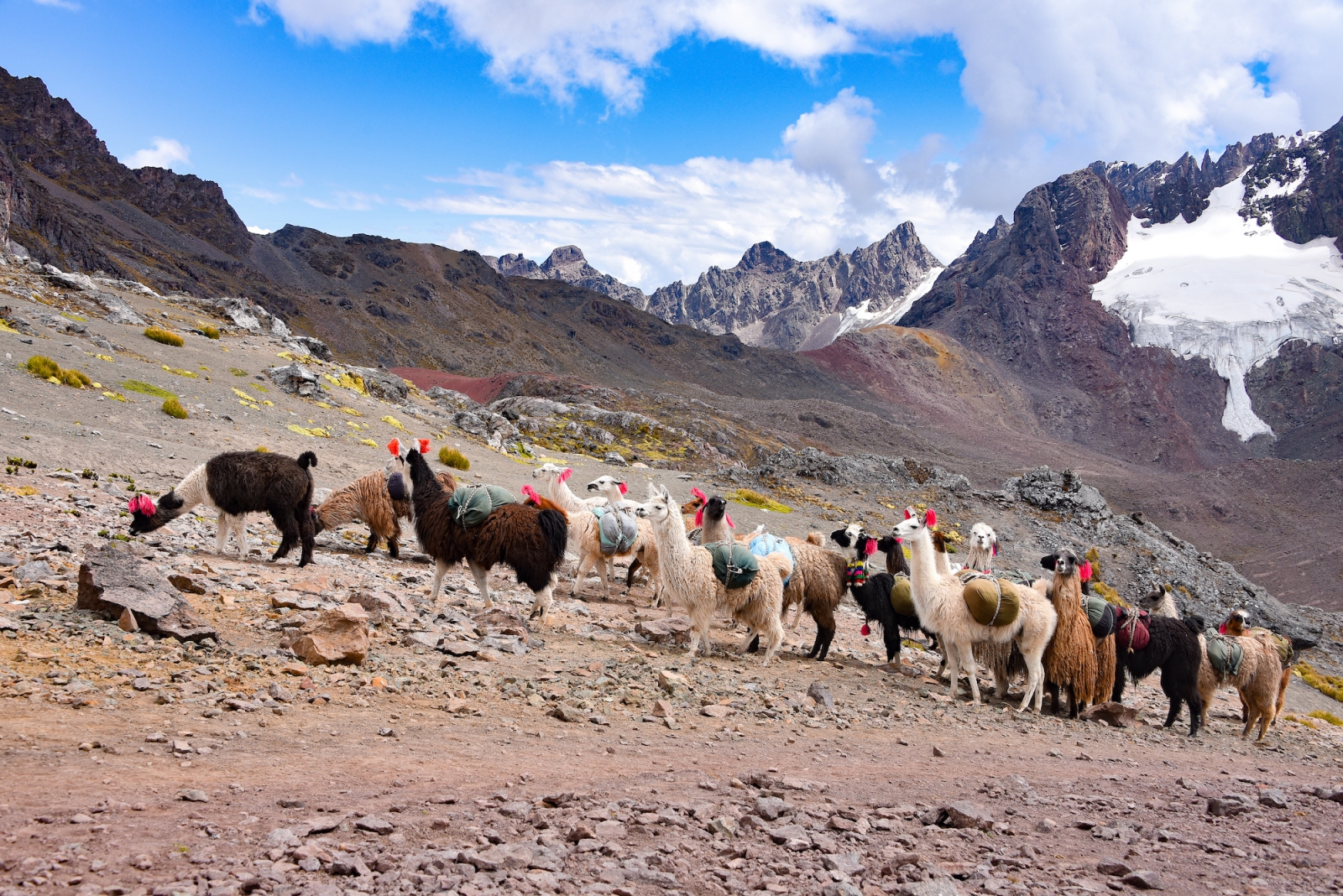
Llama pack in Cordillera Vilcanota, Ausungate, Cusco, Peru
Given the sensitive nature of the reserve's ecosystem, it's advised to visit Tambopata National Reserve with an experienced guide who can ensure a safe and responsible visit. Many of them offer guided tours to the reserve, ranging from day trips to multi-day expeditions. The reserve is accessible by air from the city of Puerto Maldonado. Overall, Tambopata National Reserve is a must-visit destination for anyone interested in bird watching and exploring the incredible natural diversity of the Amazon rainforest in Peru.
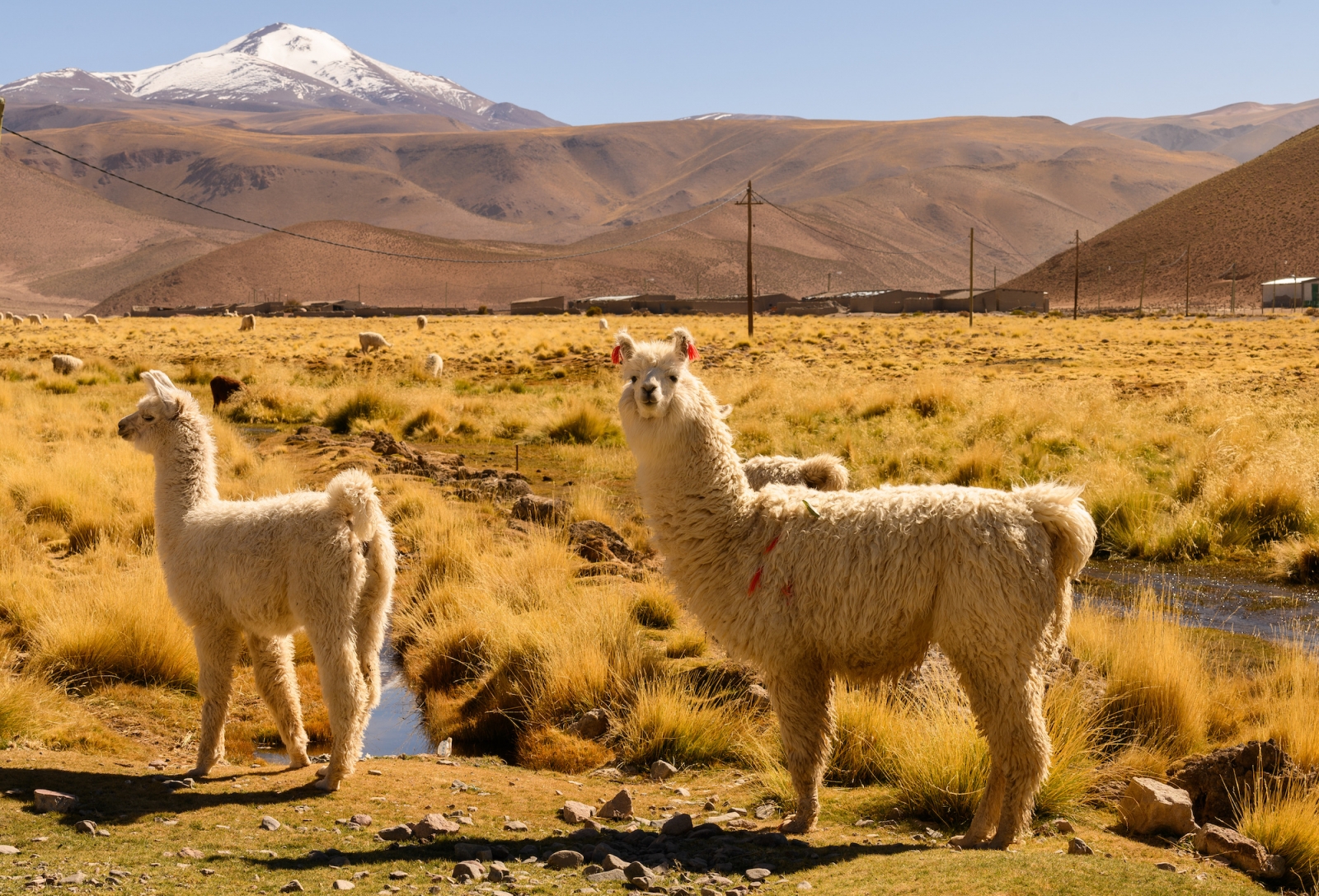
Llamas are domesticated South American camelid that is commonly found in Peru, as well as in other Andean countries such as Bolivia and Ecuador. They have been used as pack animals in the Andes Mountains for thousands of years, and continue to play an important role in the culture and economy of the region.
Here are some interesting facts about llamas in Peru:
Llamas have been used as pack animals in the Andes Mountains for thousands of years, carrying goods and supplies across rugged terrain. They are still commonly used in this way today, particularly in rural areas where motorized vehicles are not practical.
Llamas are well adapted to the high altitude and rugged terrain of the Andes Mountains. They are able to survive on a diet of tough, fibrous grasses, and can tolerate cold temperatures and low oxygen levels.
Llamas are important to the culture and economy of the Andean region. They are used for their meat, wool, and leather, and are also often used in traditional ceremonies and festivals.
Llamas are social animals and live in groups called herds. The herds are usually led by a dominant female, known as the lead llama.
Llamas are known for their distinctive appearance, with long necks and legs, and a shaggy coat of wool. They can be found in a variety of colors, including white, brown, and black.
Llamas are gentle and intelligent animals and are often used for therapy and animal-assisted activities. They are also popular as pets in some parts of the world.
Llamas are closely related to other South American camelids, including alpacas, vicuñas, and guanacos. These animals are similar in appearance and share many of the same adaptations for life in the high Andes.
Llamas are an important and fascinating part of the culture and economy of Peru and the Andean region.
Huascarán National Park
Huascarán National Park is a protected area located in the Cordillera Blanca range of the Andes Mountains in northern Peru. The park was established in 1975 and covers an area of over 340,000 hectares. While Huascarán National Park is not primarily known as a bird-watching destination, it is home to several endemic bird species that are found only in the Andean region of Peru. Some of the bird species that can be spotted in the park include the White-bellied Cinclodes, Tawny Antpitta, and the Gray-breasted Mountain-Toucan. In addition to its unique birdlife, Huascarán National Park is known for its stunning mountain landscapes, including snow-capped peaks, glacial lakes, and high-altitude ecosystems. The park's varied habitats support a wide range of other wildlife, including Andean condors, Inca Tern, vicuñas, and pumas.
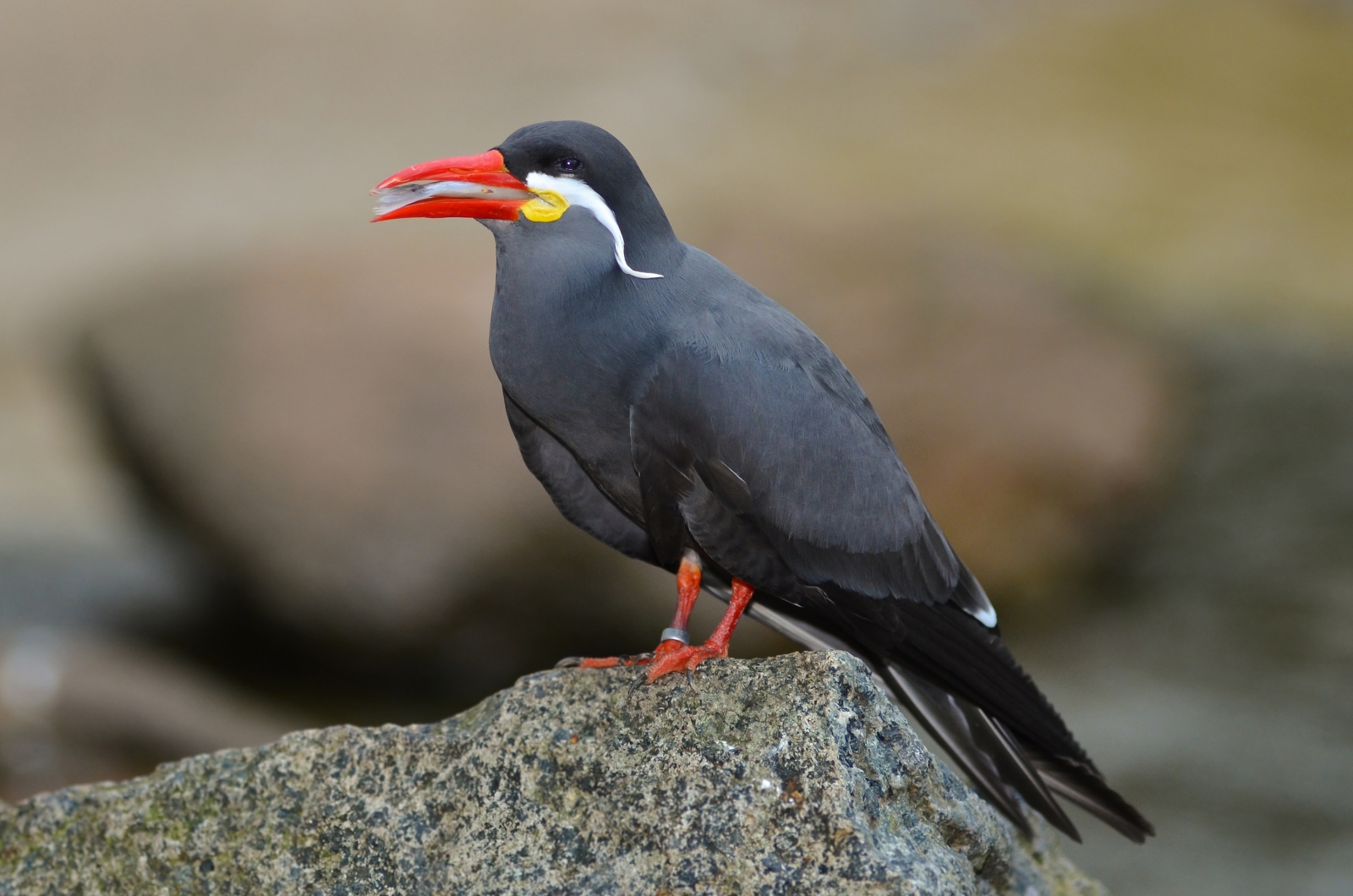
The Inca Tern is a unique-looking seabird found along the western coast of South America, from Peru to Chile. It has a distinctive and striking appearance, with a glossy black body, white moustache-like feathers on its face, and bright red-orange beak and feet. Inca Terns are highly social birds and are often seen in large flocks, both on land and at sea. They feed mainly on small fish, squid, and crustaceans, and are skilled at diving and swimming underwater in pursuit of their prey. The Inca Tern is considered a near-threatened species due to habitat loss and degradation, as well as the effects of climate change and human activities such as overfishing. Conservation efforts are underway to protect their breeding sites and preserve their populations.
Visitors to Huascarán National Park can explore the park's diverse landscapes through a range of activities, including hiking, mountaineering, and wildlife spotting. The park is also home to several small towns and communities, many of which maintain traditional ways of life and cultural practices. Given the park's high-altitude and challenging terrain, you’d better hire an experienced English-speaking tour guide in Peru on online platform PRIVATE GUIDE WORLDat www.pg.world who can ensure a safe and responsible visit. The park is accessible by road from the city of Huaraz.
Overall, Huascarán National Park is a must-visit destination for anyone interested in exploring the unique Andean ecosystems and spotting some of Peru's endemic bird species.
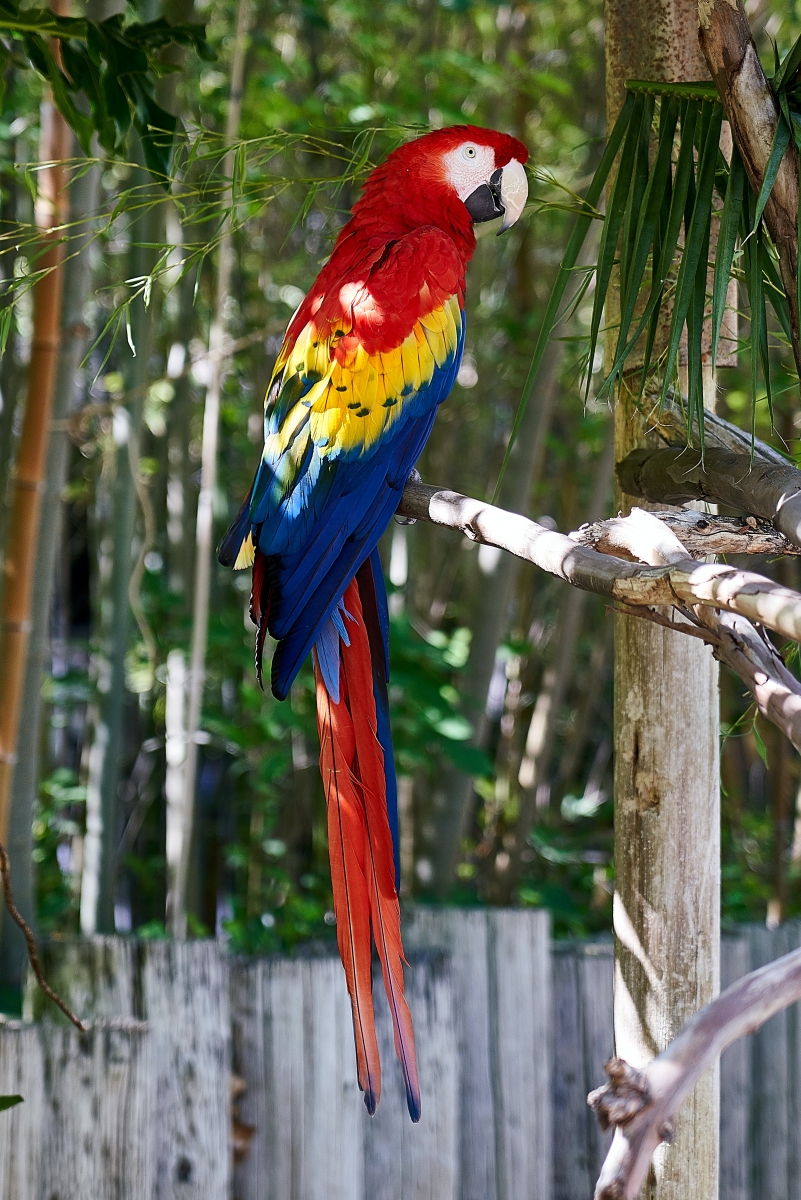
The Scarlet Macaw
The Scarlet Macaw (Ara macao) is a large, colorful bird that is native to the humid forests of Central and South America, including Mexico, Belize, Costa Rica, Panama, Colombia, Venezuela, Peru, and Brazil. The Scarlet Macaw is known for its vibrant red, blue, and yellow plumage, as well as its powerful beak and strong, agile wings. Scarlet Macaws are highly social birds and are often found in pairs or flocks. They are known for their loud calls, which can be heard from a great distance. Scarlet Macaws are also highly intelligent and capable of using tools and solving complex problems.
Unfortunately, the Scarlet Macaw has suffered greatly from habitat loss and hunting, and its population is now considered vulnerable. Conservation efforts are underway to protect the remaining populations of Scarlet Macaws and their habitats, including protected areas and captive breeding programs. In some areas, ecotourism activities such as birdwatching and photography have also become a source of income for local communities, providing an economic incentive to protect the species and its habitats.
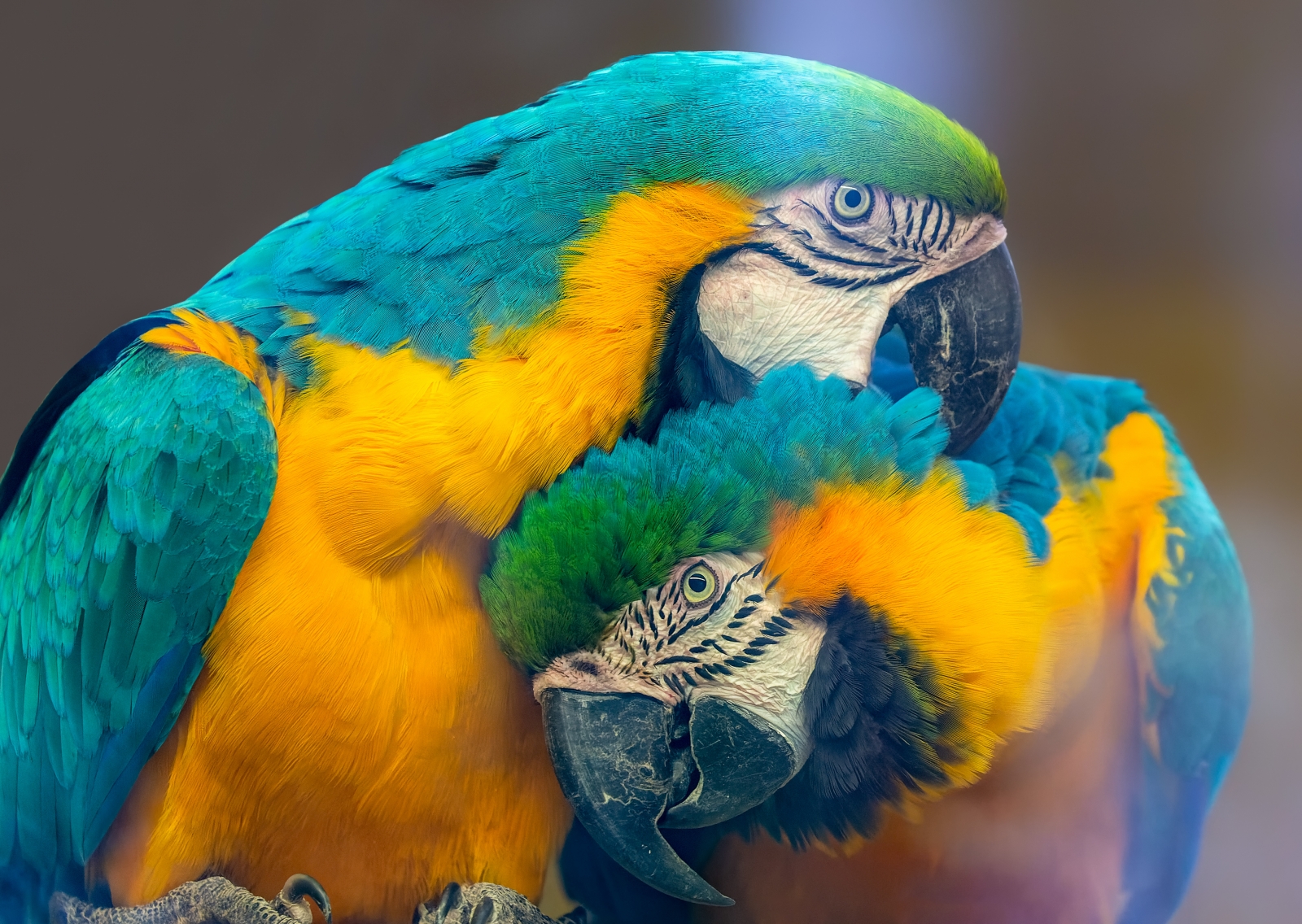
Scarlet Macaws are fascinating birds with a number of unique characteristics. Here are a few facts about them:
- Size and appearance: Scarlet Macaws are one of the largest macaw species, measuring up to 85 centimeters (33 inches) long from head to tail. They have a striking appearance, with bright red feathers covering most of their body, blue and yellow feathers on their wings and tail, and a white face with black feathers around their eyes.
- Lifespan: Scarlet Macaws can live up to 50 years in the wild and even longer in captivity.
- Habitat and diet: Scarlet Macaws live in humid rainforests, as well as savannas and forests along rivers. They feed on a variety of foods, including fruits, seeds, nuts, and sometimes insects and small vertebrates.
- Behavior: Scarlet Macaws are highly social and often form long-term pair bonds. They communicate with each other through a range of calls and body language, and they are known for their intelligence and problem-solving abilities.
- Conservation status: Scarlet Macaws are considered a species of least concern by the International Union for Conservation of Nature (IUCN), but they face a number of threats in the wild, including habitat loss and fragmentation, hunting, and the pet trade. Conservation efforts are underway to protect the remaining populations of Scarlet Macaws and their habitats.
Scarlet Macaws are remarkable birds with striking appearances and unique behaviors. They play an important role in their ecosystems, and efforts to protect them and their habitats are critical to their survival.
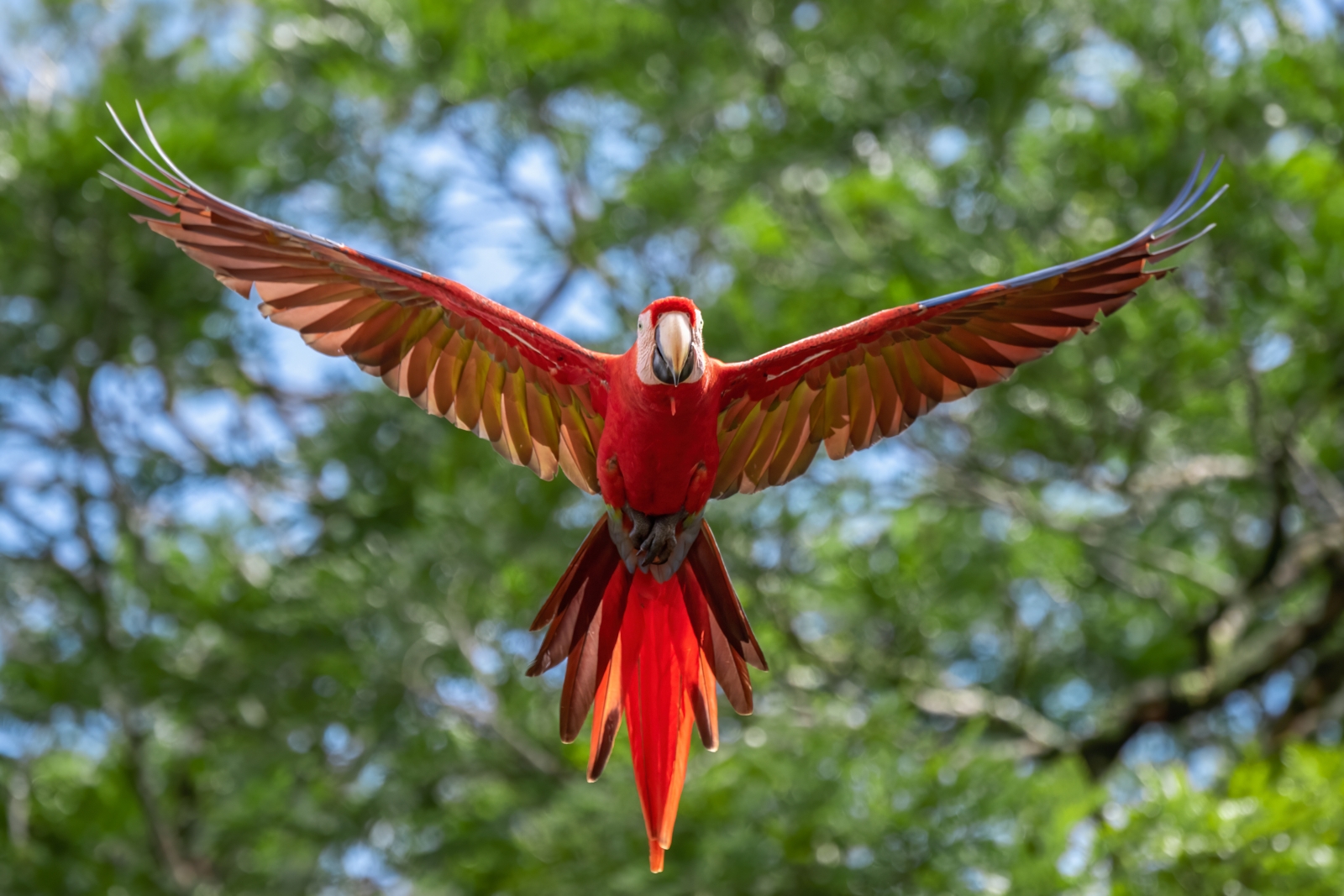
Capuchinbird
The Capuchinbird (Perissocephalus tricolor) is a large, crested bird that is found in the forests of South America, including the Amazon Basin and the Guianas. It is known for its distinctive appearance and unusual vocalizations.
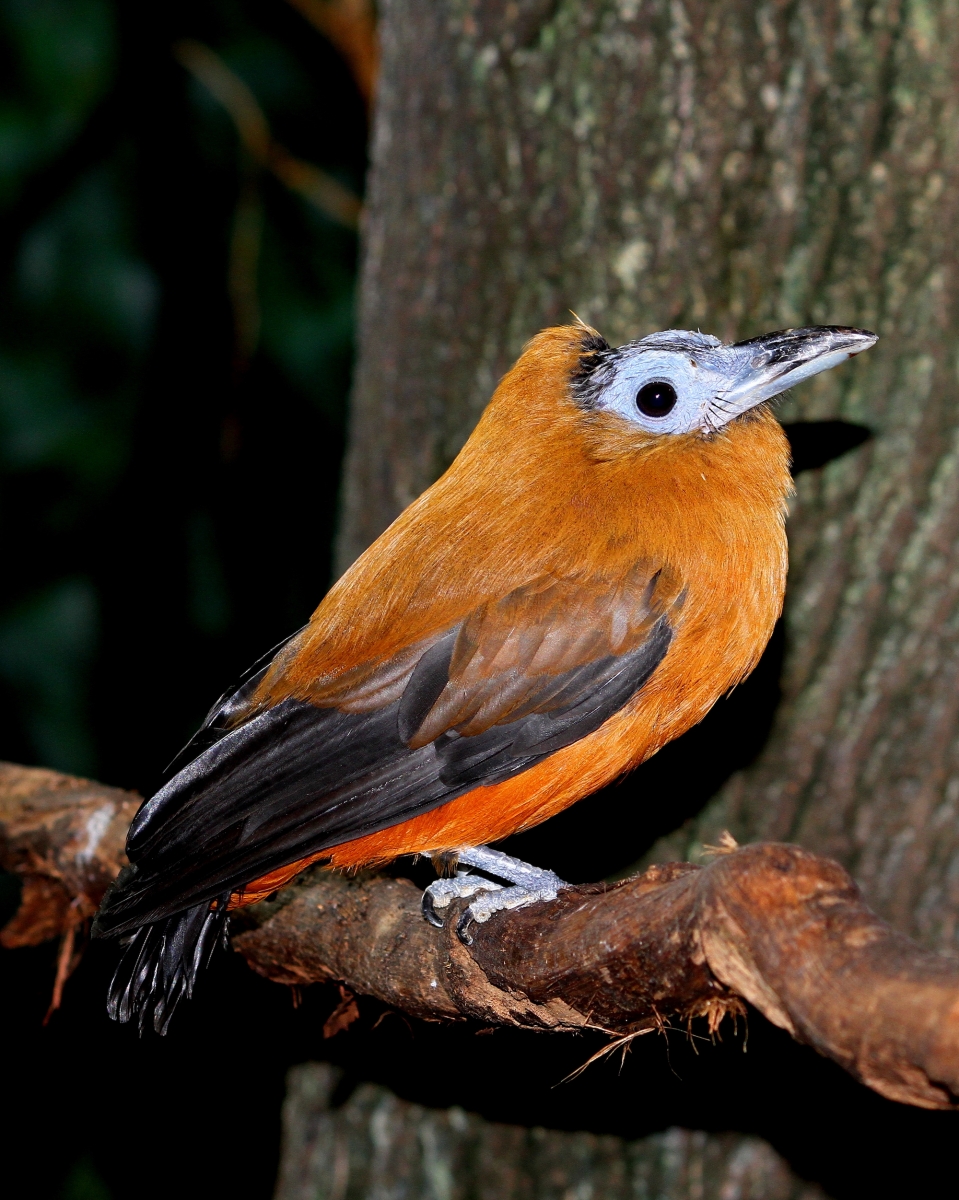
Here are a few interesting facts about the Capuchinbird:
- Appearance: The Capuchinbird is a large, mostly black bird with a striking yellow crest on its head. It has a thick, heavy bill and long, broad wings. Adult males are larger than females, and they have a larger and more colorful crest.
- Vocalizations: The Capuchinbird is known for its unusual vocalizations, which have been compared to the sound of a sneeze or a bullfrog. Males gather in groups and perform a courtship display, which includes making these sounds and flapping their wings. The vocalizations can be heard from a long distance, and they are thought to be an important part of the Capuchinbird's mating behavior.
- Diet: The Capuchinbird feeds mainly on fruit and insects. It is known to forage in the canopy of the forest, where it uses its strong bill to break open tough fruit skins.
- Conservation status: The Capuchinbird is listed as a species of least concern by the International Union for Conservation of Nature (IUCN), but it is considered rare in many parts of its range. Its habitat is threatened by deforestation, and it is also hunted for food and for its feathers.

Man is hiking the Inca Trail to Dead Woman's Pass, Huanuco, Peru, South America
Humboldt Penguins
Humboldt Penguins (Spheniscus humboldti) also live in Peru. They are named after the Humboldt Current, a cold water current that flows along the western coast of South America and provides important habitat for this penguin species. In Peru, Humboldt Penguins can be found along the southern coast, in the region around the city of Ica. They nest in colonies on rocky islands and cliffs along the shore, where they feed on small fish and krill that they catch in the cold, nutrient-rich waters of the Humboldt Current.
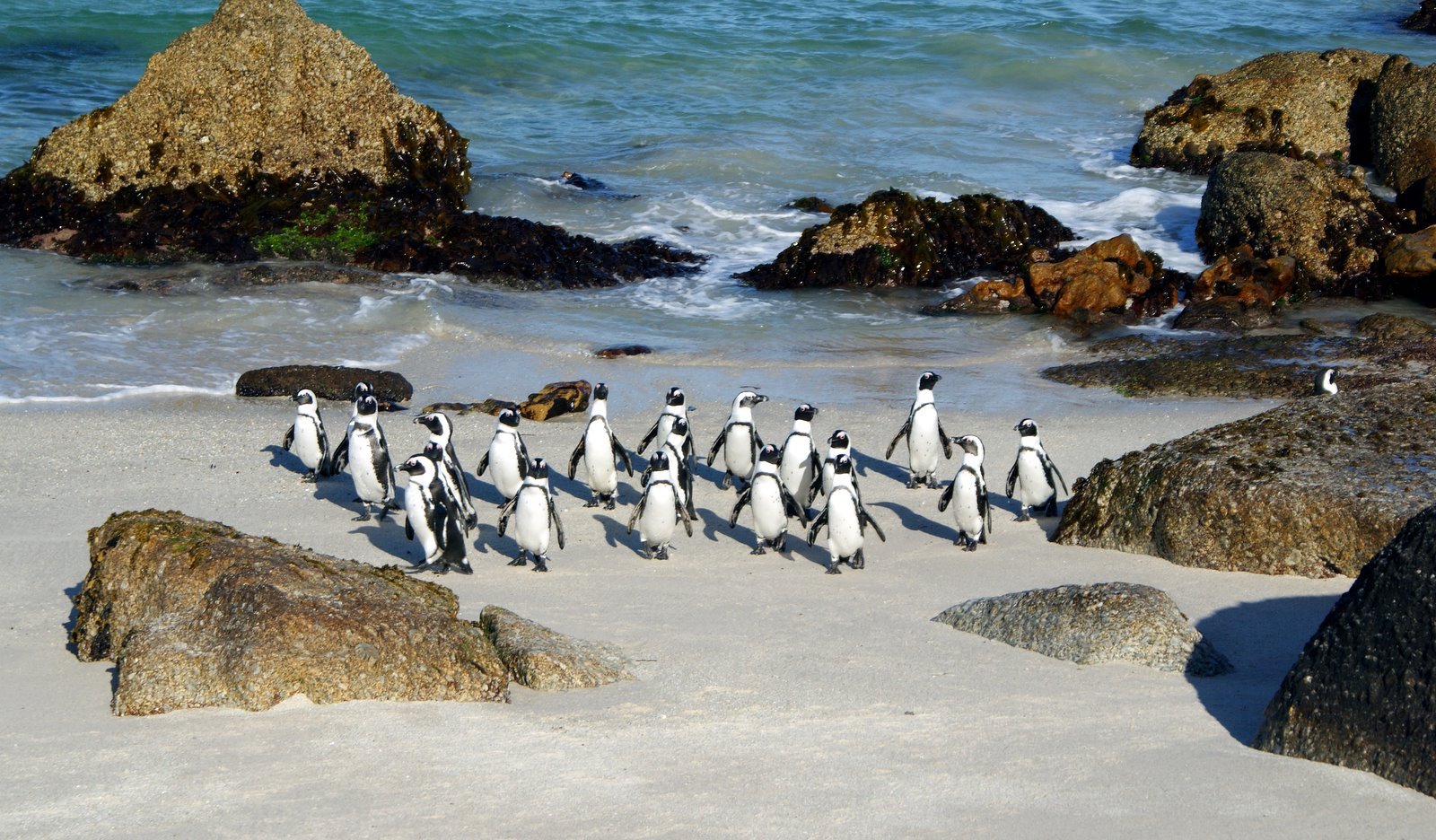
Humboldt Penguins are considered a vulnerable species by the International Union for Conservation of Nature (IUCN), due to a variety of threats including overfishing, habitat destruction, and disturbance from human activities. Conservation efforts are underway to protect these penguins and their habitat, including the establishment of protected areas and monitoring programs to track population trends and threats to their survival.
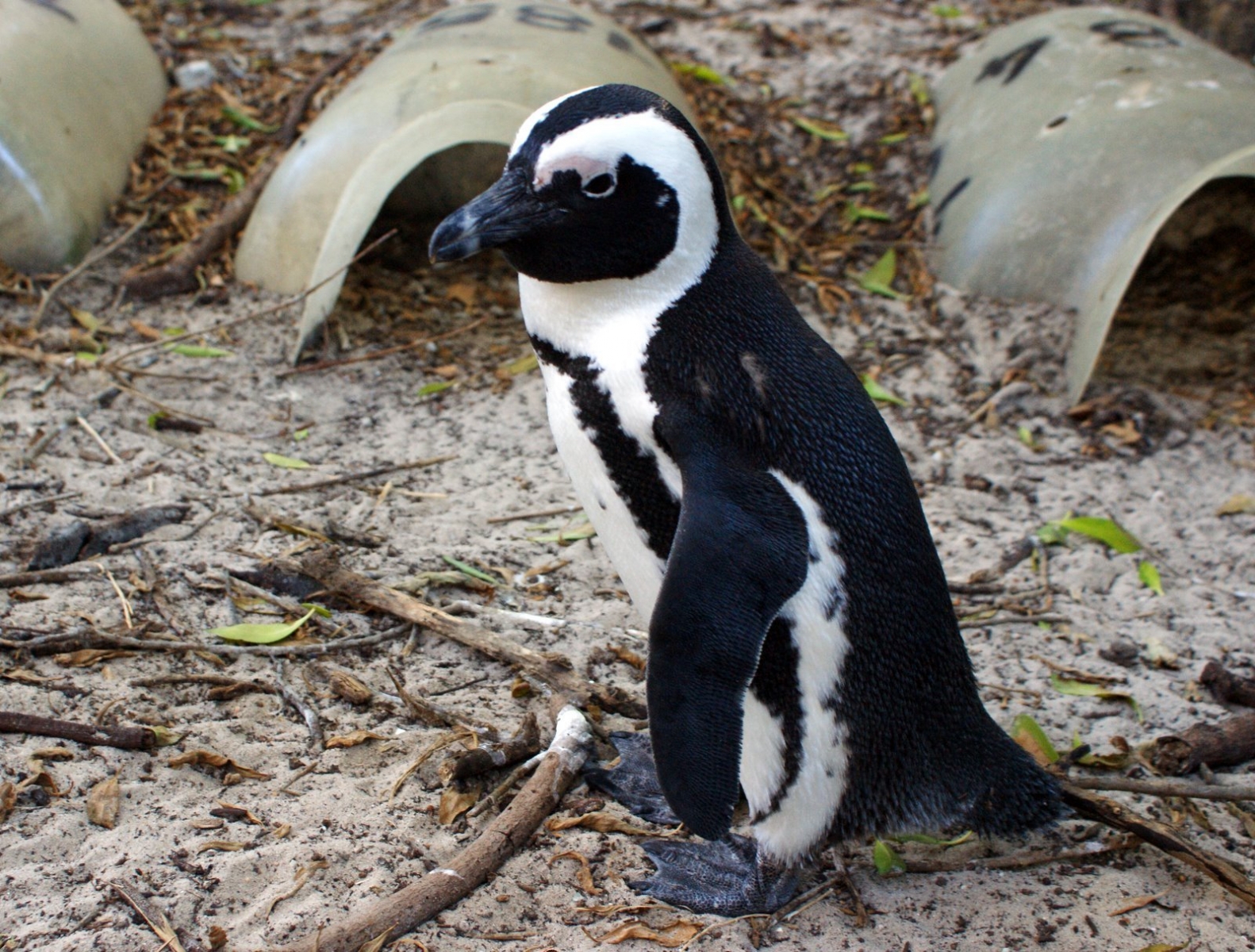
Peru is a must-visit destination for bird-watching enthusiasts, offering an incredible diversity of bird species and habitats. With responsible bird-watching practices under the guidance of local experienced guides in Peru, visitors can have a memorable and rewarding birding experience in this bird-watching paradise
Read our previous article Guide to African safari transportation
Read our next article Chrysler Building: Visit the Famous Skyscrapers Of New York










Wow, Peru seems to be interesting birding destination like Rwanda. Would love to visit one time